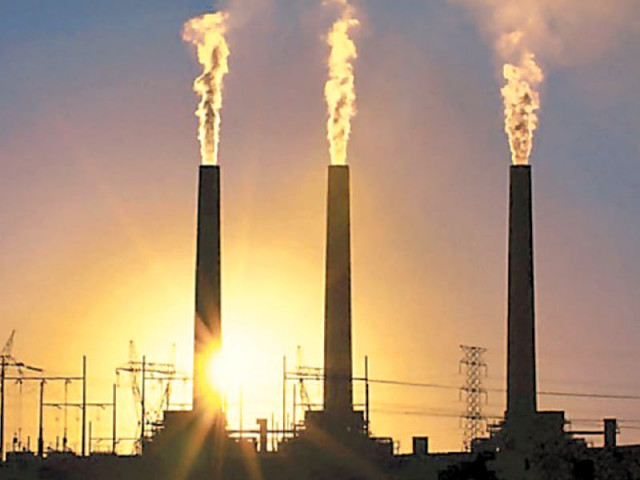Policy shift: Government plans to produce power from coal on a big scale
Power ministry seeks clearance for 9,800MW coal-run power plants.

The government will also undertake work on new coal-run power plants, which will be capable of generating 7,210MW of electricity. PHOTO: FILE
The government is planning to produce electricity on a massive scale with the help of coal-fired power projects in an attempt to tackle shortages, improve generation and control the re-emerging inter-corporate debt.
According to sources, the Ministry of Water and Power has approached the Planning Commission, seeking clearance of 9,800-megawatt coal-based power plants, which would be completed in three years.
To produce that much electricity, three existing independent power plants (IPPs) of 2,590MW capacity will be shifted to coal to bring down the generation cost. These include 400MW Guddu, 840MW Jamshoro and 1,350MW Muzaffargarh power plants.
The government will also undertake work on new coal-run power plants, which will be capable of generating 7,210MW of electricity. These projects include two plants of 600MW each in Balochistan’s coastal area of Hub, 2,400MW Thar projects, 1,200MW Karachi Coastal project, 1,200MW Lakhra project and 1,200MW Jamshoro projects.

A senior government official told The Express Tribune that the water and power ministry had submitted concept papers to the Planning Commission for formal approval. After clearance, feasibility studies on these projects will be undertaken and bids would be invited to award contracts.
ADB withdraws assistance
However, according to sources, the Asian Development Bank (ADB), which had earlier pledged $1.4 billion in financing the conversion of existing power projects into coal-based plants, has now backed out because of row over consumption of Thar coal. The bank wants Pakistan to use imported coal for power production by the IPPs, but the previous government was reluctant, stressing it would allow only Thar coal-based power plants.
“Now, the ADB has agreed to provide funds for the new 1,200MW coal-fired projects at Jamshoro,” the official said.
The shift to coal is aimed at avoiding the circular debt build-up in future and providing cheap electricity to the consumers. The debt has plagued the entire energy chain, forcing the government to spend billions of rupees every month to prop up the energy system.
According to a study conducted by the Ministry of Water and Power, the economy can save around $26 billion in fuel costs over the next 15 years if thermal plants of only 420MW are shifted to coal.
About 68% of the country’s power production comes from oil and gas. Though gas is a cheaper fuel, it is getting increasingly scarce, meaning plants that have the capacity to run both on oil and gas are forced to rely on furnace oil. This, however, more than doubles the cost of electricity production.
In an effort to encourage independent power plants (IPPs), the water and power ministry has decided to reduce customs duty on equipment and spare parts needed for the shift to coal to just 5%.
Under a proposed plan, the IPPs will be given a maximum of one year to shift from oil and gas to coal. In this period, they will be paid to cover their returns and also interest payments on funds raised for the conversion.
The IPPs, which are regulated under the power policy of 1994, will be allowed to sell coal-based power to the national grid without any modifications to their contracts or approval from the regulators. However, those plants that come under the policy of 2002 will require regulatory approval.
Published in The Express Tribune, July 30th, 2013.
Like Business on Facebook, follow @TribuneBiz on Twitter to stay informed and join in the conversation.



















COMMENTS
Comments are moderated and generally will be posted if they are on-topic and not abusive.
For more information, please see our Comments FAQ